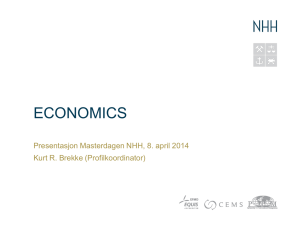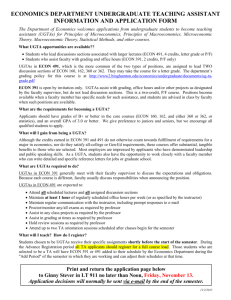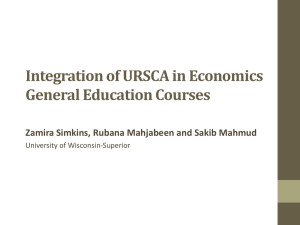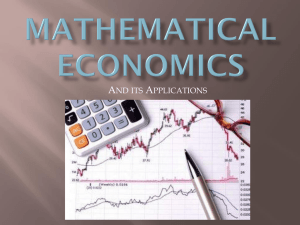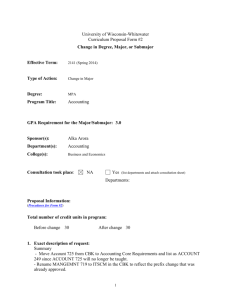Growth: The Measure of Law and Economics by
advertisement
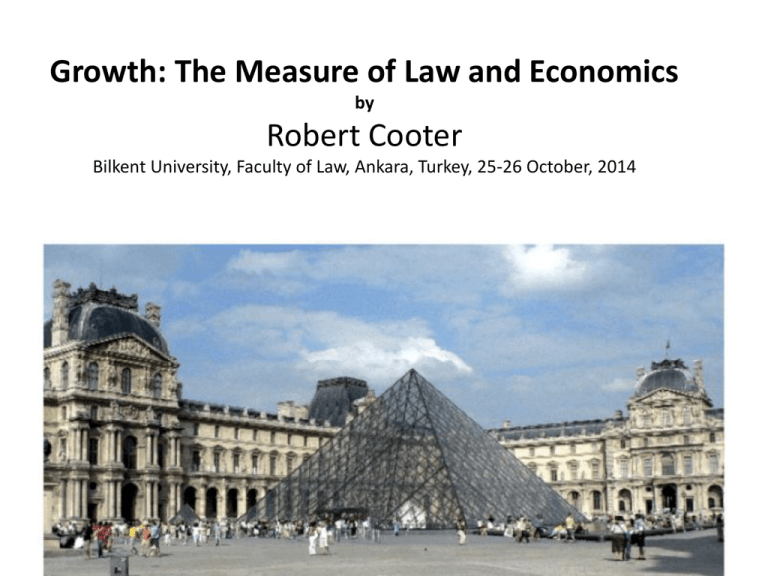
Growth: The Measure of Law and Economics by Robert Cooter Bilkent University, Faculty of Law, Ankara, Turkey, 25-26 October, 2014 Two Enterprises Legal Causes • Prove the effects of laws. • Find the empirical consequences of laws. • Model responses to laws. • Find what caused officials to make or repeal a law. Legal Content • Say what the law requires of people. • Say what the law is. • Interpret laws. • Restate the law. • Offer legal reasons. • Determine the law’s correct categories. Pyramid of Law and Economics content enterprise cause enterprise Year of Publication of Some Seminal Law and Economics Books and Articles (some titles abbreviated) General 1960. Coase. “Social Cost.” 1967. Demsetz. “Property Rights”. 1968. Becker. "Crime and Punishment”. Textbooks 1972. Posner. Economic Analysis of Law. 1987. Cooter & Ulen. Law and Economics. 1989. Polinsky. Intro to Law and Economics. Torts 1970. Calabresi. Cost of Accidents. 1973. Brown. “Economic Theory of Liability”. 1987. Shavell. Econ Anlys of Accident Law. 1987. Landes & Posner. Econ Strctr of Tort Law. Corporations 1937.Coase. “The Nature of the Firm. 1965. Manne. “Market for Corporate Control. 1972.Alchian & Demsetz. “Information & Organization” 1975. Williamson. Markets & Hierarchies 1976. Jensen & Meckling. “Agency & Ownership.” Major Law and Economics Associations By Date of First Meeting AALS (American Association of Law School) Professors Teaching Law and Economics Numberof Law & Econ Professors 300 247 250 189 200 158 153 150 Less than 5 years 124 102 100 50 0 1995 2000 Total 2005 AALS Professors Teaching Law and Economics and Law School’s Ranking # of Faculty that Indicate they Teach L&E in the Top 25 Law Schools, 20052006 7 # of Faculty 6 5 4 Teach L&E 3 Linear (Teach L&E) 2 1 0 1 2 3 4 5 6 7 8 9 10 11 12 13 14 15 16 17 18 19 20 21 22 23 24 Law School Rank Law Professors Teaching L&E Compared to All Law Professors Number of Law School Professors 12000 Entire Faculty 10,136 10000 9073 Law & Economics Professors 8000 6000 4000 2000 247 189 0 2000 2.0% 2005 2.4% Compound growth • 2% =>7 times, • 5% => 130 times • 10% =>14,000 times Liberalization Experience Positive • China • India • Central European countries joining EU Negative or Mixed • Central European countries not joining EU • Africa • Latin America (except Chile) Examples of Double Trust Dilemma • Boston bank • EndNote • SAP Figure 2.1. Double Trust Dilemma Ideas Innovator Investor Capital Figure 2.3. Finance in Silicon Valley Relational Private Public Figure 2.4. Finance and Development Relational Relational + Private Relational + Private + Public Figure 2. Life Cycle of a Successful Venture “Legalize Freedom” The Prescription for Growth (Property, Contract, Business Law) + Liberalization => Growth --Property Principle for Innovation: The creators of wealth should keep much of it. --Contract Principle for Coordination: The law should enable people to commit to doing what they say. --Organizational Principle for Liberty: People can freely enter most lines of business and choose their firm’s organization from a legal menu. Legal Infrastructure: Three Principles of Law for Growth • Property Principle for Innovation: The creators of wealth should keep much of it. • Contract Principle for Coordination: The law should enable people to commit to doing what they say. • Organizational Principle for Liberty: People can freely enter most lines of business and choose their firm’s organization from a legal menu. END of SLIDE SHOW






